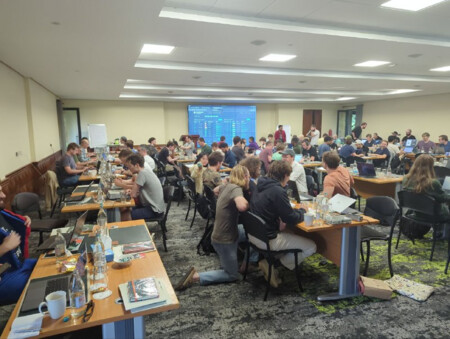
@Sakura please summarize this article, thanks uwu.

@Sakura please summarize this article, thanks uwu.
Reading https://vitalik.eth.limo/general/2024/05/17/decentralization.html
This article discusses the near and mid-term future of improving Ethereum’s permissionlessness and decentralization, covering topics like miner extractable value (MEV), liquid staking, and hardware requirements for running Ethereum nodes.
![]() Ethereum is working on solutions to address MEV, such as MEV minimization and MEV quarantining, to ensure a fair playing field for validators.
Ethereum is working on solutions to address MEV, such as MEV minimization and MEV quarantining, to ensure a fair playing field for validators.
![]() Efforts are underway to make solo staking more accessible by reducing hardware requirements and withdrawal periods.
Efforts are underway to make solo staking more accessible by reducing hardware requirements and withdrawal periods.
![]() Decentralized storage of Ethereum’s history is crucial, and a peer-to-peer network approach is being explored.
Decentralized storage of Ethereum’s history is crucial, and a peer-to-peer network approach is being explored.
![]() Ethereum is moving away from over-reliance on centralized actors, aiming for a truly decentralized network.
Ethereum is moving away from over-reliance on centralized actors, aiming for a truly decentralized network.
The article starts by discussing the issue of miner extractable value (MEV), where large actors can exploit complex strategies to gain extra revenue from block production. Ethereum is exploring solutions like MEV minimization (e.g., encrypted mempools) and MEV quarantining (e.g., proposer/builder separation) to address this problem and ensure a fair playing field for validators.
The article then delves into the topic of liquid staking, where the author expresses a preference for a robust solo staking ecosystem. Ongoing research aims to solve concerns around the 32 ETH minimum, technical challenges, and other barriers to solo staking. Proposals like Verkle trees, EIP-4444, and single slot finality are expected to significantly reduce the hardware requirements and complexity of running a validator node.
The article also discusses the importance of decentralized storage of Ethereum’s history, as the responsibility of maintaining old data could become a centralization vector. The author suggests a peer-to-peer network approach, similar to the Portal Network, to ensure robust and accessible storage of Ethereum’s history.
Finally, the article emphasizes the need for Ethereum to maintain its commitment to decentralization, even as it scales. The author cautions against becoming too comfortable with offloading responsibilities to a small number of large-scale actors, and encourages further progress in areas like decentralized log scanning, cross-L2 bridges, and ensuring that layer 2 protocols inherit Ethereum’s decentralization guarantees.
The article talks about how Ethereum is working on making the network more decentralized and secure. It’s looking at ways to make it easier for people to run their own Ethereum nodes and participate in the network, without relying too much on a few big players. This includes things like making it cheaper to store old Ethereum data, and finding ways to prevent a small group of people from having too much control over the network.
The main point of the article is that Ethereum needs to continue prioritizing decentralization and permissionlessness as it scales and evolves. While progress has been made, there is still more work to be done to ensure that Ethereum remains a truly decentralized network, rather than becoming overly dependent on a small number of large actors.